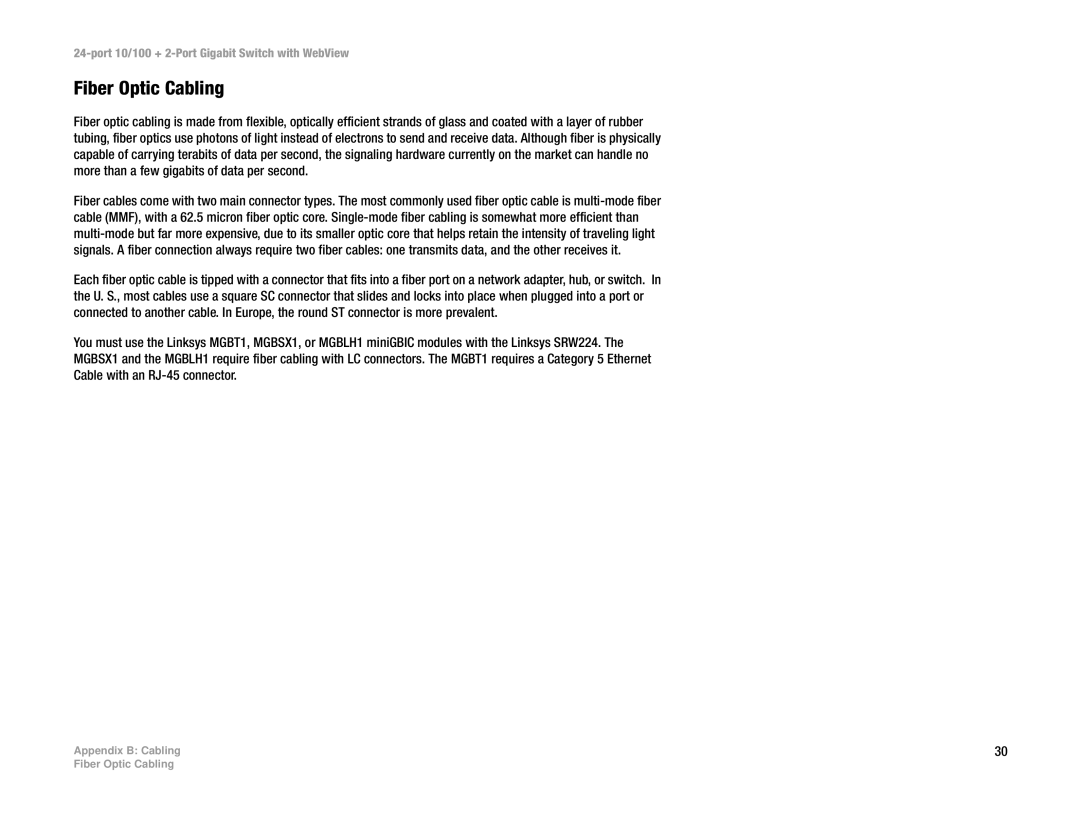24-port 10/100 + 2-Port Gigabit Switch with WebView
Fiber Optic Cabling
Fiber optic cabling is made from flexible, optically efficient strands of glass and coated with a layer of rubber tubing, fiber optics use photons of light instead of electrons to send and receive data. Although fiber is physically capable of carrying terabits of data per second, the signaling hardware currently on the market can handle no more than a few gigabits of data per second.
Fiber cables come with two main connector types. The most commonly used fiber optic cable is
Each fiber optic cable is tipped with a connector that fits into a fiber port on a network adapter, hub, or switch. In the U. S., most cables use a square SC connector that slides and locks into place when plugged into a port or connected to another cable. In Europe, the round ST connector is more prevalent.
You must use the Linksys MGBT1, MGBSX1, or MGBLH1 miniGBIC modules with the Linksys SRW224. The
MGBSX1 and the MGBLH1 require fiber cabling with LC connectors. The MGBT1 requires a Category 5 Ethernet
Cable with an
Appendix B: Cabling | 30 |
Fiber Optic Cabling
